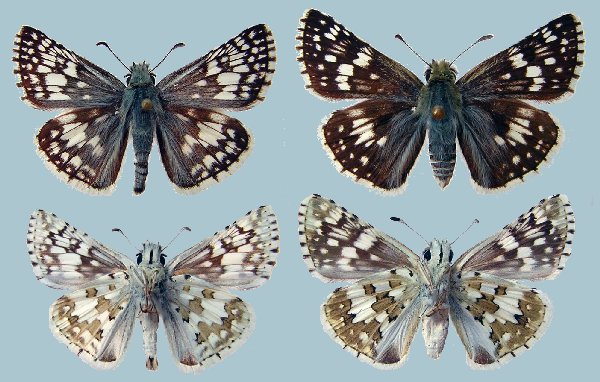Pyrgus communis communis

Photo Life History: Pyrgus communis communis
Habitat: Urban-Suburban; Agricultural Areas; Valley Wet Meadows; Mountain Canyons; Pinyon Juniper;
Host Plants: Malva neglecta; Sida hederacea; Sphaeralcea ambigua; Sphaeralcea coccinea
Suitable Lab Host Plants: Alcea rosea (Most any mallows will work in the lab.)
How to Find Female Butterflies: Click here.
How to Care for Live Female Butterflies: Click here.
Methods of Female Oviposition: Portable Cages; Potted Plant Sleeves; Small Squat Tub
How to Find Eggs:
How to Hatch Eggs: Consolidate eggs into one container
How to Find Caterpillars in the Field: Look for Skipper Nests. Checkered skippers make conspicuous nests on mallows. Click here for example.
How to Find Pupae in the Field: Look for Skipper Nests. However, I have not been able to locate pupae in larval nests. Larvae may wander off plant before pupating.
Caterpillar setups: Open terrariums; Open Bucket; Twin Cup Method;
Larva to Pupa: Larva Changes Color from green to brown before hibernating; green to pink before pupating.
Number of Broods per Year: 2-3
Overwintering Stage: larva (possibly different instars)
Overwintering Strategies: Your Own Backyard; Refrigerator
Post-Hibernation Strategies: Provide post-diapause larva with warmer temperatures and fresh host plant.
Avoiding Diapause Techniques: Healthy host plant. It is not difficult to push late-fall feeding larvae through to pupa/adult by providing fresh host plant.
Disease Prevention: Change out host plant and remove frass every two to three days.
Emergence: Emergence Container
Field Notes:

